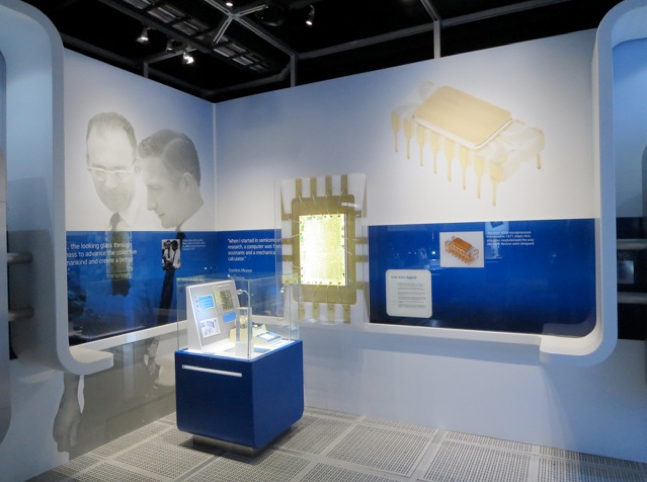|
The Intel 4004 Microprocessor and the Silicon Gate Technology
|
|
|
A testimonial from Federico Faggin, designer of the 4004 and developer of its enabling technology
|
|
Introductory Note
"The silicon design is the essence of the first microprocessor."
(quote by Federico Faggin)
The MOS silicon-gate design created by Federico Faggin for the 4004 launched the microprocessor revolution. Faggin led the microprocessor project and invented how to design a large number of random logic transistors into a single small piece of silicon, with 5 times the speed and twice the transistor density of the incumbent technology, thus creating history’s first monolithic processor - the microprocessor - a feat previously unattainable. His novel design was the real breakthrough since everything else, including desktop programmable calculators and processors built in several chips, had already been invented before or concurrently. The silicon gate technology (SGT), created by Faggin at Fairchild in 1968, was the basic process technology that enabled the microprocessor. The SGT, however, required a new approach to chip design and by 1970 nobody had yet developed the layout and the circuit design methodology, including all the circuits necessary to implement complex random logic, to accomplish such a feat. Because Faggin knew the SGT inside out, he was uniquely able to invent and develop the crucial missing ingredients to make the microprocessor a reality.
Iconic Signature
With pride of authorship, Federico Faggin signed the 4004 with his initials F.F. etched in a corner of every 4004 produced.
Busicom 141-PF Calculator, shown inside the glass case, Intel Museum
The Busicom desktop printing calculator was the first commercial application of the microprocessor. It is powered by a microcomputer using one 4004 CPU and its companion chips: five 4001’s, two 4002’s, three 4003’s, all designed by Federico Faggin. The world’s first programmable desktop printing calculator was the Olivetti Programma 101 (1965) which used a programmable computer at its core. Its architecture inspired all future similar products.
The Computer History Museum in Mountain View, CA, displays the Engineering Prototype of the Busicom 141-PF Calculator, which was the test bed for the first commercial microprocessor application of the 4004 and holds inside the first 4004 ever produced. The unique engineering prototype was a personal present from Busicom president Yoshio Kojima to Federico Faggin (in 1971) who gifted it to the CHM (in 1996).
Intel Museum, Santa Clara, CA - Current 4004 Microprocessor Display
Below: Intel Museum, Santa Clara, CA - Panoramic picture of the current 4004 microprocessor display.

Below: Intel Museum, Santa Clara, CA - Magnified 4004 mask showing the 4004 chip layout.

Transcription of the Intel 4004 legend:
- The blue lines represent the top metal layer. In the 1960s and through to the 1990s the metal was always aluminum. Since then very fast chips use copper because it is a better conductor of electricity.
- The red lines represent the middle "polysilicon" layer. This layer forms the "gate" that controls the flow of electrons through the transistor.
- The green lines represent the bottom "diffusion" (ion-doped silicon. When a red line and a green line cross, they form a transistor or an electronic switch.
- The "big chip" was made using a printed circuit board. The thin black lines are printed circuit 'wires'. The tiny black circles are called 'vias'. They connect different layers of the printed circuit board.
- The thick blue, red and green lines represent the layers of the original chip.
- The big rope-like wires running from the chip to the gold lead frame are what the gold bond wires would look like if you blew them up to 130X scale. Bond wires carry power and signals to and from the chip.
Below: Intel Museum, Santa Clara, CA - Enlarged picture of the packaged Intel 4004 microprocessor chip.

Transcription of the Intel 4004 legend:
The Intel 4004 microprocessor. Introduced in 1971, Intel's first processor revolutionized the way electronic devices were designed.
|
|
|

